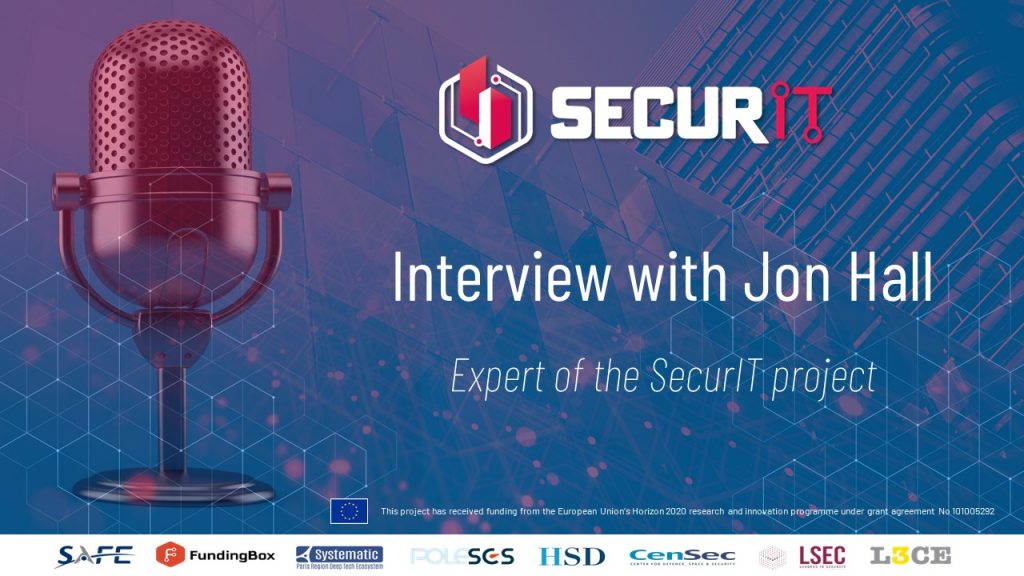
During summer, we had the opportunity to meet online an expert of the SecurIT project: Jon Hall. We took this time to ask him a few questions about himself and his role in the SecurIT project as a member of the advisory board.
Jon Hall has been a career safety specialist for the last 40 years. He worked for UK’s government first as a chief fire officer and then building the international response of the UK’s Fire and Rescue sector. He is now working for the Resilience Advisors Network (RAN). On the other hand, he is part of the CMINE (Crisis Management Innovation Network Europe), composed of more than 2000 specialists on Disaster Resilience Society. It’s an online platform bringing everyone together to talk on the projects already being worked on.
“The first aim was to bring practitioners and responders more into the research world. And that’s what RAN (Resilience Advisors Network) does.
But CMINE then tries to break down barriers between research clusters and between interested parties.”
Jon Hall participated as member of the advisory board of the SecurIT project with the goal to support the project with the networks already existing: RAN and CMINE, especially on the broader disaster resilience area. Their role was to take SecurIT activities into broader networks. As part of the advisory board and networks, his work was mostly about spreading the word between specialists and other actors. Letting people know about the project, making them familiar with the logo and the different phases of the project. Furthermore, “it was also about encouraging commercial organizations to respond to SecurIT calls”. Within CMINE, they had the opportunity to talk to about 2,000 researchers about the project. Also, the idea was to bring SecurIT outside of its own consortium and make the project known by other people interested in the projects.
For Jon Hall, SecurIT is a great example on how to use an advisory board by using it to extend your field of expertise where it might be helpful. As network, they were very pleased to be involved in the project, even if they are not covering all the topics related to SecurIT. They bring the Disaster Resilience Society into the security field and try to engage people in SecurIT project who would not normally get into it.
“Every project tends to have an advisory board of some sort, and it’ll use them for different reasons.”
We also asked him his opinion on the technologies being developed in SecurIT and what kind of difference it can make in the security sector. Most of the time, the same solutions are being displayed on to different problems, going from border control to infrastructure resilience. It already exists various investments coming from the community regarding the technology issues. It’s a whole community composed of companies, organizations, nations and even international organizations that are trying to solve specific responder problems. In his opinion, and for instance, it is important to understand that another project is likely to be looking at the movement of people after an earthquake. They recently worked on a project based in Sicily around Mount Etna about mass movement of public during major eruptions. The technology used was the same as the one for the safety of sports grounds.
“Sometimes the structures that empower us can also be the structures that inhibit us. And once you recognize that and start looking for the common themes, then I think it’s definitely positive.“
For him, that is what SecurIT is doing and it adds value by recognizing that the technologies involved exist across the whole board of security through all the areas treated by SecurIT project and its portfolio.
“I think that’s one of the things that SecurIT does, it tries to look beyond its own little world and promote its activities beyond that, which is really strong. Very good.”

